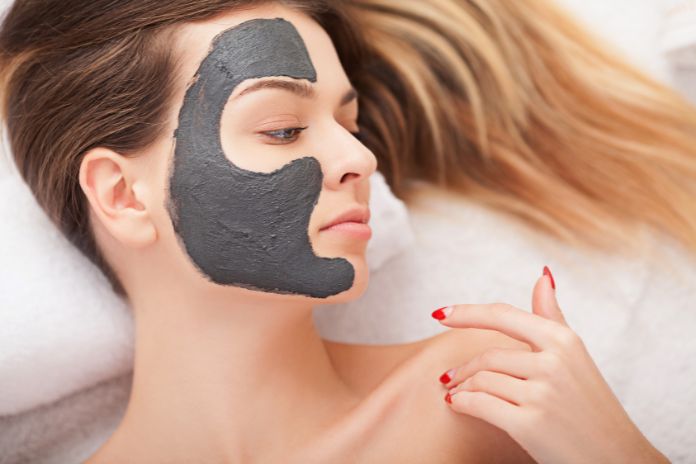As skincare enthusiasts, we all want to achieve flawless and healthy skin. Two skincare products that have been making rounds in the beauty world are clay masks and exfoliators.
While they may seem similar in function, they have distinct differences.
In this article, we will explore the difference between clay masks and exfoliators, and which one is best suited for your skin type.
A clay mask is a skincare product that contains clay as its main ingredient. These masks come in different types and are known for their ability to absorb excess oil, dirt, and impurities from the skin. Clay masks are widely used for their detoxifying and purifying properties.
Contents
- 1 How do clay masks work?
- 2 Benefits of using clay masks
- 3 Different types of clay masks
- 4 How to use clay masks
- 5 What are exfoliators?
- 6 How do exfoliators work?
- 7 Benefits of using exfoliators
- 8 Different types of exfoliators
- 9 How to use exfoliators
- 10 Which one is right for you?
- 11 Can you use both?
- 12 Precautions while using clay masks and exfoliators
- 13 Conclusion
- 14 FAQs
How do clay masks work?
When applied to the skin, clay masks work by absorbing excess oil and impurities from the pores. The clay in the mask draws out toxins and impurities from the skin, leaving it clean and refreshed. Clay masks also help to unclog pores, which makes them a popular choice for people with oily or acne-prone skin.
Benefits of using clay masks
Detoxifies the skin: Clay masks are known for their ability to draw out impurities and toxins from the skin, leaving it feeling clean and refreshed.
Reduces the appearance of pores: By unclogging pores and removing excess oil, clay masks can help to reduce the appearance of pores, giving the skin a smoother and more even look.
Absorbs excess oil: Clay masks are particularly effective for people with oily skin, as they can absorb excess oil and prevent breakouts.
Helps to unclog pores: By removing dirt and impurities from the skin, clay masks can help to prevent clogged pores and reduce the risk of acne.
Improves skin texture and tone: Regular use of clay masks can help to improve the texture and tone of the skin, giving it a brighter, more youthful appearance.
Different types of clay masks
There are different types of clay masks available in the market, and each has its unique benefits.
Kaolin Clay Mask
Kaolin clay is a gentle clay that is suitable for all skin types, especially sensitive skin. It is known for its ability to soothe and calm the skin while also absorbing excess oil.
Bentonite Clay Mask
Bentonite clay is a powerful clay that is best suited for people with oily and acne-prone skin. It has a high absorption rate and can remove impurities and toxins from the skin.
French Green Clay Mask
French Green Clay is a natural clay that is rich in minerals and has a high absorption rate. It is suitable for people with oily skin and can help to reduce the appearance of pores.
How to use clay masks
To use a clay mask, apply a thin layer to your face and neck, avoiding the eye area. Leave it on for 10-15 minutes or until it dries. Rinse off with warm water and pat your skin dry.
What are exfoliators?
Exfoliators are skincare products that are designed to remove dead skin cells from the surface of the skin. They come in different types and are known for their ability to improve skin texture and tone.
How do exfoliators work?
Exfoliators work by sloughing off dead skin cells from the surface of the skin. This helps to unclog pores, remove impurities and
improve the overall appearance of the skin. Exfoliators can be physical or chemical.
Benefits of using exfoliators
Improves skin texture and tone: Exfoliators work by removing dead skin cells from the surface of the skin, revealing smoother, brighter skin underneath. This can improve the overall texture and tone of the skin.
Helps to unclog pores: Exfoliators can help to unclog pores by removing dirt, oil, and dead skin cells that can clog them. This can reduce the risk of breakouts and acne.
Reduces the appearance of fine lines and wrinkles: Regular exfoliation can help to reduce the appearance of fine lines and wrinkles, as it promotes the production of collagen and elastin, which help to keep the skin looking youthful.
Enhances the effectiveness of other skincare products: By removing dead skin cells, exfoliators can help other skincare products to penetrate the skin more effectively, allowing them to work more efficiently.
Brightens the skin: Exfoliators can help to remove dull, dead skin cells from the surface of the skin, giving it a brighter, more radiant appearance.
Different types of exfoliators
There are two main types of exfoliators: physical and chemical.
Physical Exfoliators
Physical exfoliators use abrasive particles to slough off dead skin cells from the surface of the skin. They can be in the form of scrubs, brushes, or sponges. Physical exfoliators are best suited for people with normal to oily skin.
Chemical Exfoliators
Chemical exfoliators use acids, enzymes, or other chemicals to dissolve dead skin cells from the surface of the skin. They are gentler than physical exfoliators and are best suited for people with sensitive or dry skin.
How to use exfoliators
To use an exfoliator, apply a small amount to your face and neck, avoiding the eye area. Gently massage in a circular motion for 30-60 seconds, then rinse off with warm water and pat your skin dry. It is important to use exfoliators only 1-2 times a week, as over-exfoliating can cause damage to the skin.
Which one is right for you?
The choice between a clay mask and an exfoliator depends on your skin type and concerns. If you have oily or acne-prone skin, a clay mask would be the best option as it can absorb excess oil and unclog pores. If you have dry or sensitive skin, a gentle chemical exfoliator would be a better option as it can remove dead skin cells without causing irritation.
Can you use both?
Yes, you can use both a clay mask and an exfoliator in your skincare routine. However, it is important to not overdo it and use them only once or twice a week to avoid over-exfoliating.
Precautions while using clay masks and exfoliators
Patch test before use: Before using a new product, it is important to do a patch test to make sure that you are not allergic to any of the ingredients.
Follow the instructions: Make sure to read and follow the instructions on the packaging carefully, as overusing or leaving the product on for too long can cause skin irritation.
Avoid using on broken or irritated skin: Do not use clay masks or exfoliators on broken or irritated skin, as it can cause further damage and irritation.
Use in moderation: Overuse of clay masks or exfoliators can cause over-exfoliation, which can damage the skin and cause sensitivity. Use these products only once or twice a week.
Avoid the eye area: Clay masks and exfoliators should not be used near the eye area, as they can cause irritation and sensitivity.
Use a moisturizer after: After using a clay mask or exfoliator, make sure to use a moisturizer to hydrate and protect the skin from dryness and irritation.
Here is a table summarizing the differences between clay masks and exfoliators:
| Clay Mask | Exfoliator | |
|---|---|---|
| Main Function | Absorbs excess oil and impurities, detoxifies the skin, unclogs pores | Removes dead skin cells, improves skin texture and tone, brightens the skin |
| Types | Kaolin, bentonite, French green clay | Physical and chemical |
| Suitable for | Oily or acne-prone skin | Dry or sensitive skin |
| Frequency | Once or twice a week | Once or twice a week |
| Precautions | Follow instructions, avoid leaving on for too long, use moisturizer after | Patch test before use, avoid broken or irritated skin, use in moderation, follow instructions |
Conclusion
In conclusion, while clay masks and exfoliators may seem similar, they have distinct differences. Clay masks are best suited for people with oily or acne-prone skin, while exfoliators are best suited for people with dry or sensitive skin.
It is important to choose the right product for your skin type and concerns, and to use them in moderation to avoid over-exfoliating.
FAQs
How often should I use a clay mask?
You can use a clay mask once or twice a week.
Can I use a physical exfoliator if I have sensitive skin?
No, it is best to use a gentle chemical exfoliator if you have sensitive skin.
Can I use a clay mask and exfoliator on the same day?
It is not recommended to use both products on the same day as it can cause over-exfoliation.
How long should I leave a clay mask on?
You should leave a clay mask on for 10-15 minutes or until it dries.
Can I use an exfoliator every day?
No, it is not recommended to use an exfoliator every day as it can cause over-exfoliation and damage to the skin. It is best to use an exfoliator only 1-2 times a week.
In conclusion, both clay masks and exfoliators are great skincare products that can improve the overall appearance of your skin. While they may seem similar, they have distinct differences that make them better suited for certain skin types and concerns. It is important to choose the right product for your skin type and to use them in moderation to avoid over-exfoliation. By incorporating clay masks and exfoliators into your skincare routine, you can achieve healthy, glowing skin.

